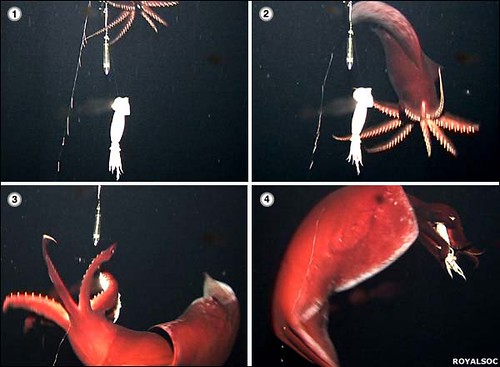The film captured the squid, Taningia danae, in action: 1 The squid swims towards the bait; 2 It spreads its arms wide; 3 It swims around the bait, twisting its body; 4 It grabs the bait with its eight arms.
Japanese scientists have discovered that large deep-sea squids produce flashes of bioluminescent light on their tentacles as they attack their prey. These light flashes are thought to disorient their prey, making it easier for the squid to grab their potential victim with their eight tentacles.
Writing in a Royal Society journal, the paper's authors say that squid are far from the sluggish, inactive beasts once thought.
In fact, the footage (included with cited story), taken in 2005, was the first time Taningia danae had been captured on camera in their natural environment, and it reveals them to be aggressive predators.
The squid, which can measure over 2m (7ft) in length, deftly swim backwards and forwards by flapping their large, muscular fins. They are able to alter their direction rapidly by bending their flexible bodies.
The films, taken at depths of 240m to 940m (790 to 3,080ft), also show the cephalopods reaching speeds of up to 2.5m (8ft) per second as they attack the bait, capturing it with their eight tentacles.
Cited story and film.
.

